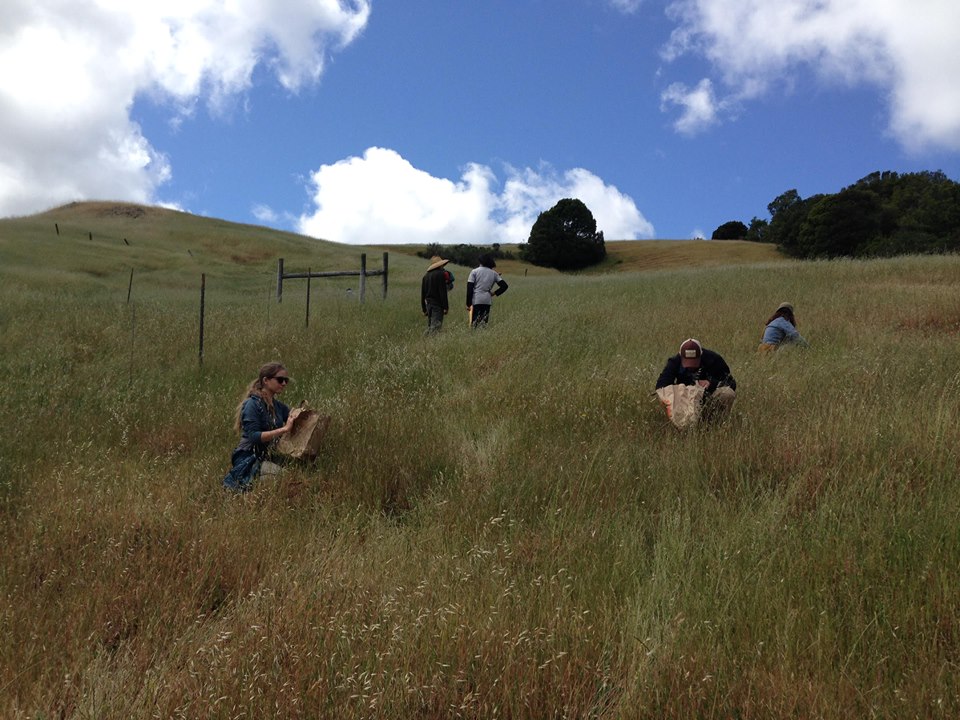
Photo by Mel Wright.
SPAWN’s habitat restoration crew and native plant nursery staff have spent the last few months collecting plant seeds from diverse habitats throughout the Lagunitas Creek Watershed. These seeds are collected for use in our habitat restoration projects, and are from areas where we have permission and permits. Native seeds and plants play a critical role in restoring watershed lands by providing wildlife habitat, reducing the spread of invasive plants, and stabilizing slopes that could be prone to erosion.
Once the seeds are collected they are first cleaned of the chaff or husk and then stored in paper or burlap bags until they are ready to be treated, sown, or broadcasted at a planting site. Seeds that undergo treatment are kept moist and cool in a refrigerator for a brief time before being sown; this triggers the plant into germination. Other seeds are scattered by hand and raked into the seedbed, while others are sown directly into potting soil to mature as plants in SPAWN’s native plant nursery.
This spring, SPAWN primarily collected native grass seeds, such as purple needlegrass, blue wildreye, meadow barley, and California fescue. Grasses are important to use in habitat restoration because they grow quickly and stabilize the ground, offer “micro-climates” for other native plants to grow, and provide habitat and food for wildlife. As the summer turns to fall, many of the seeds and cuttings SPAWN collects will include trees and shrubs such as redwood, bigleaf maple, buckeye, oak, coffee berry, coyote brush, mugwort, and blue blossom.
Thanks to the help of many volunteers, SPAWN was able to collect seeds and cuttings from over 90 different species of plants! This species diversity is important when growing plants for restoration projects because greater biodiversity leads to higher-quality habitats that offer many opportunities for native wildlife to thrive.
When collecting seeds, SPAWN follows best-practice guidelines. We never take too much and never take seeds from isolated plants. By leaving at least half of the seeds we find, we can assure that the plants continue to grow and provide for us when we need them in future years.
Collecting seeds and growing plants provides our volunteers and staff opportunities to connect to our land, and see the rich abundance and biodiversity that our watershed provides. We invite you to join us on seeds collection hikes, nursery workdays, and watershed restoration projects to help us save the critically endangered coho salmon, and improve the health of the watershed that we all enjoy. Nursery workdays and seed collection hikes are every Friday from 10am to 2pm, and we have monthly Saturday restoration projects as well. Click here to see our calendar of events and get involved!




